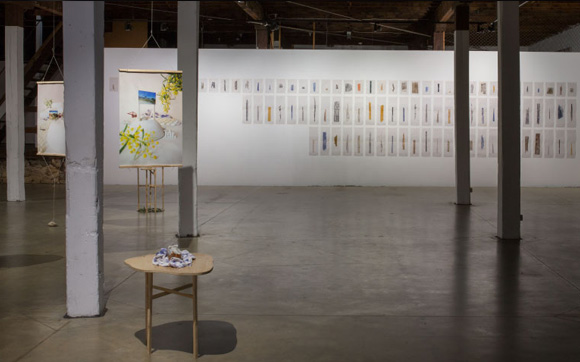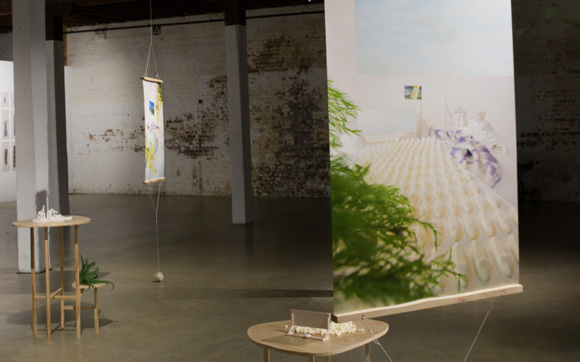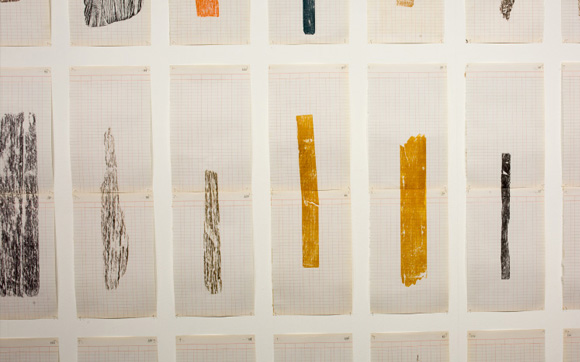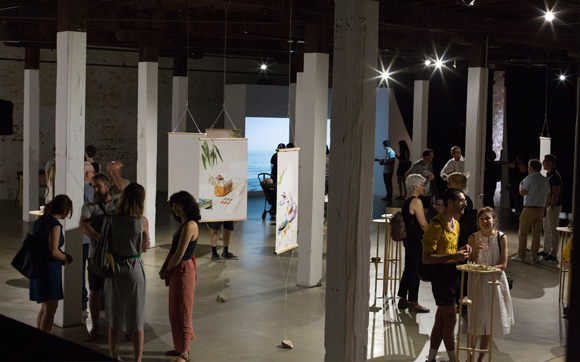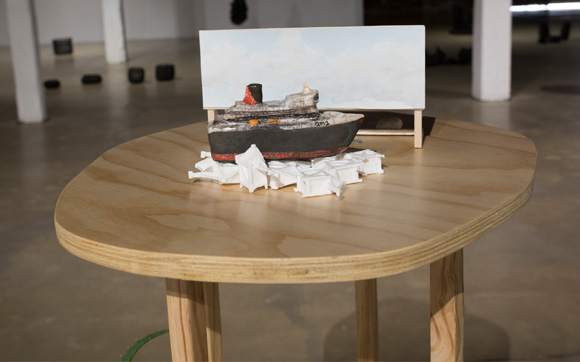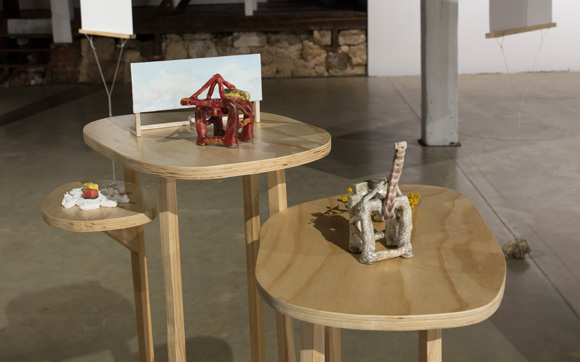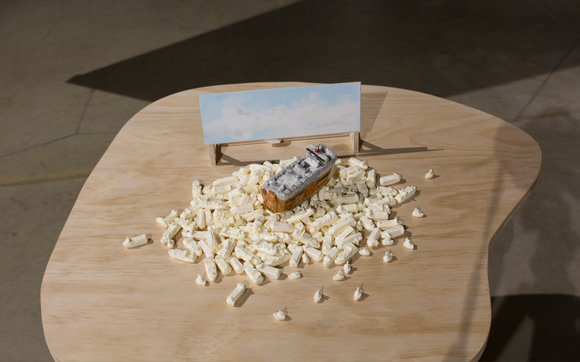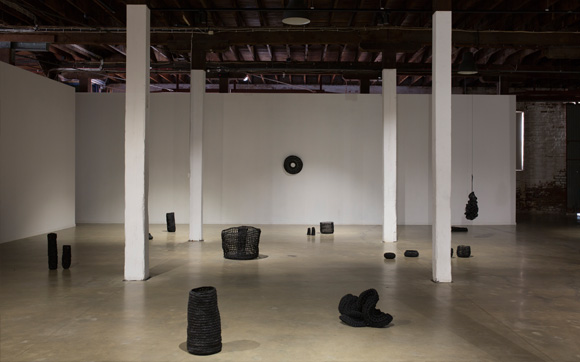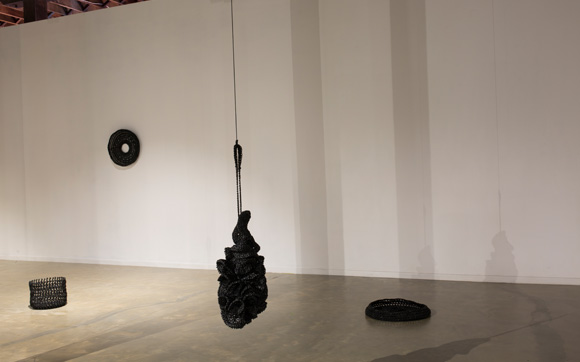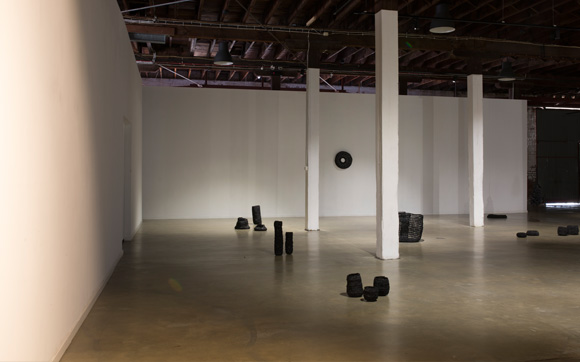Fathom
Simryn Gill, Ariane Palassis, Amy Prejuan-Capone
Curated by Ric Spencer and Tom MùllerThis installation-based group exhibition considers crafted objects, miniatures and prints by three female artists who share a strong link with the ocean and a history of making art that looks out to sea. By gracefully deepening their respective approaches to making, printmaking, weaving and casting, the three artists reach for new depths, imbuing their objects, vessels and printed manuscripts with a personal narrative, informed by the life of the sea. Fathom takes the audience on a distant voyage.
SIMRYN GILL
Simryn Gill works in various medias and methods including sculpture, photography, drawing and writing. She is known for making collections, of ephemera, found materials and also her own large series of photographs, which she arranges and processes into extended art works. These works can have the quality of being incomplete, an attribute shared with collections in general: that a definitive or truly representative set is an elusive objective. She acknowledged this aspect of her practice during her tenure in 2013 in the Australian pavilion at the Venice Biennale, saying “mine is not a representative voice—in fact, it’s entirely the opposite of that possibility … representation is a very strange notion.” Her work has been said to occupy a space of transition, or better expressed as transitory-ness, often taking small mementos and fleeting moments of life to express complicated relationships to place. Red Hot (1992, destroyed), a Native American headdress, was fashioned by the artist with her young son from her homegrown chillies in Adelaide, following instructions from a 1950’s American Boy Scouts manual for one in turkey feathers. This work, made in the quincentenary of Columbus’ landing in America, and four years after the Australian bicentenary was celebrated shortly after the artist arrived here, is an early example of Gill’s approach with the gentle incursion of the domestic into worldly affairs.
ARIANE PALASSIS
Receiving her Masters in Architecture from The University of Western Australia gave Palassis a broad skill base coupled with an appreciation for materiality and the details of construction. While practising Palassis worked on a wide range of projects, from new residential and commercial developments to conservation works on some of WA’s most important heritage sites. These include Fremantle Prison, Sunset Hospital and the Midland Railway Workshops. In developing her own art practice Ariane has continued to follow her architectural interest in the analysis of place as a repository of human memory and experience. Being Australian with Greek heritage, the displaced old world rituals and the value of family mythologies and cultural traditions have played a large role in her work. Ariane is also a self-confessed bibliophile, with literature, poetry and historical texts all acting as sources of inspiration.
AMY PEREJUAN-CAPONE
Amy Perejuan-Capone graduated from Curtin art school in 2009, and went on to study Industrial Design at Central Institute of Technology after living in Albany (Western Australia), Helsinki, Sydney, and Reykjavik. Her work is multidisciplinary and borrows methodologies from both art and design as it benefits my investigation of the power, agency, and interconnectedness of the inorganic elements of human life. The three central disciplines in her practice (furniture, ceramics, drawing)act as support pillars for my work, like a stool needs three legs to stand up. She approaches her regular subject matter (super normal things like ships, super markets, condiments, cars, trucks, and rocks) as a keen observer, obsessed like a trainspotter with the daily goings on of inorganic things. This approach is a way of negotiating her place amongst the system of things, as well as negotiating her femininity in the industrial sphere. Engaging with the art, craft and design discourses, exploring new ways of approaching ancient media such as ceramics and furniture from these contemporary perspectives.
Fathom is supported by PS Art Space and Utopia Art Sydney.
Images courtesy of the artist and Fremantle Biennale. Photos: James Whineray

